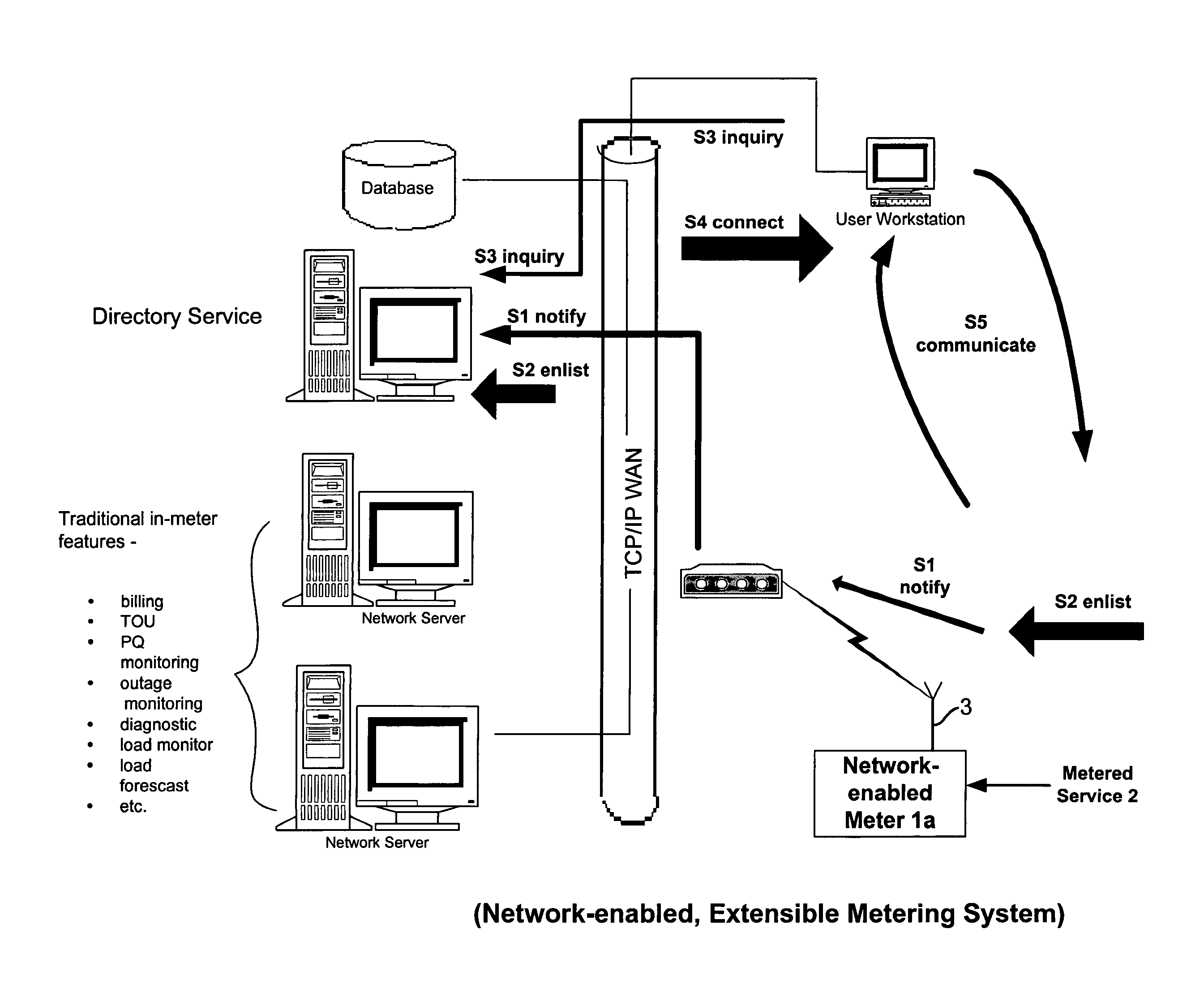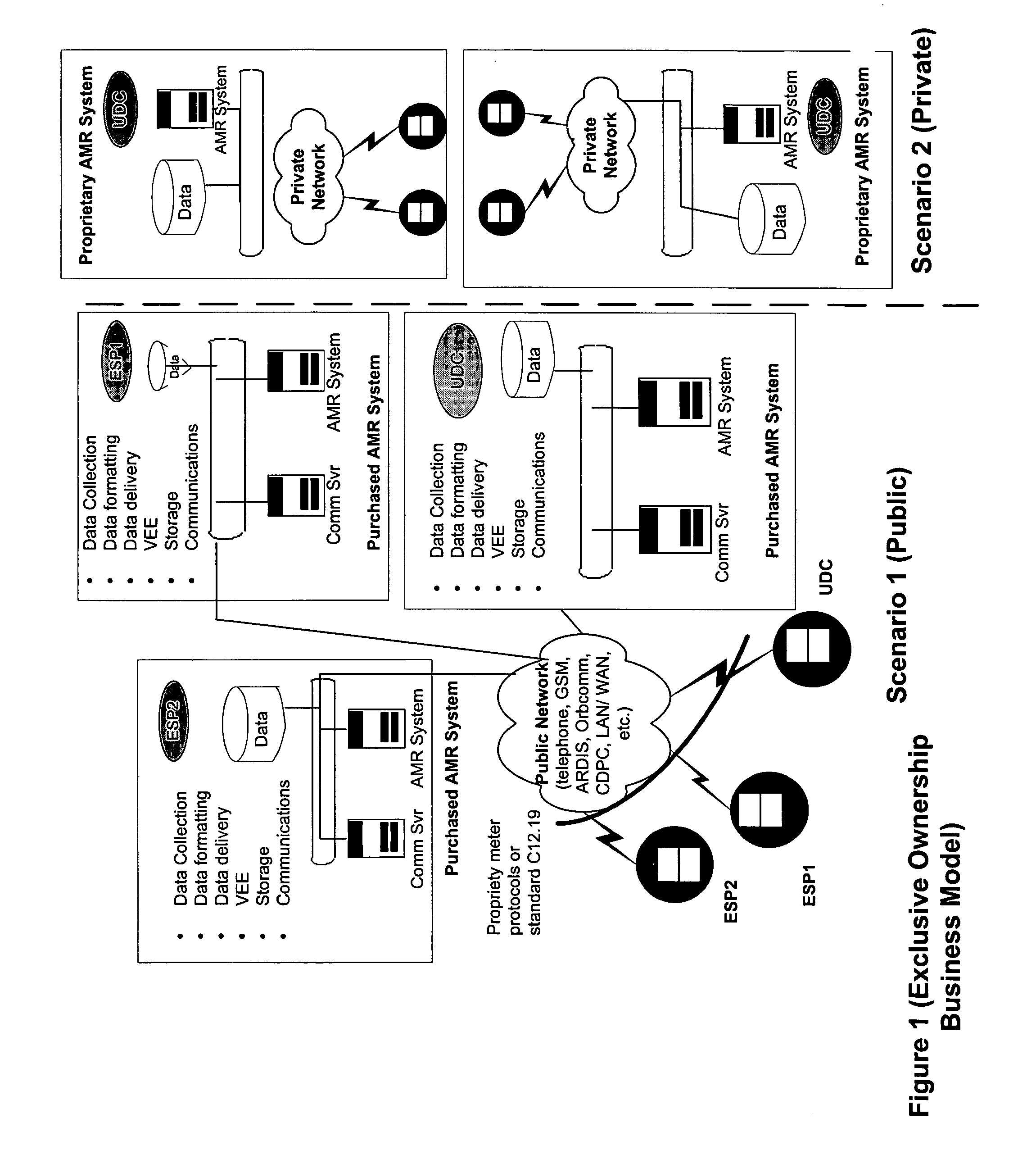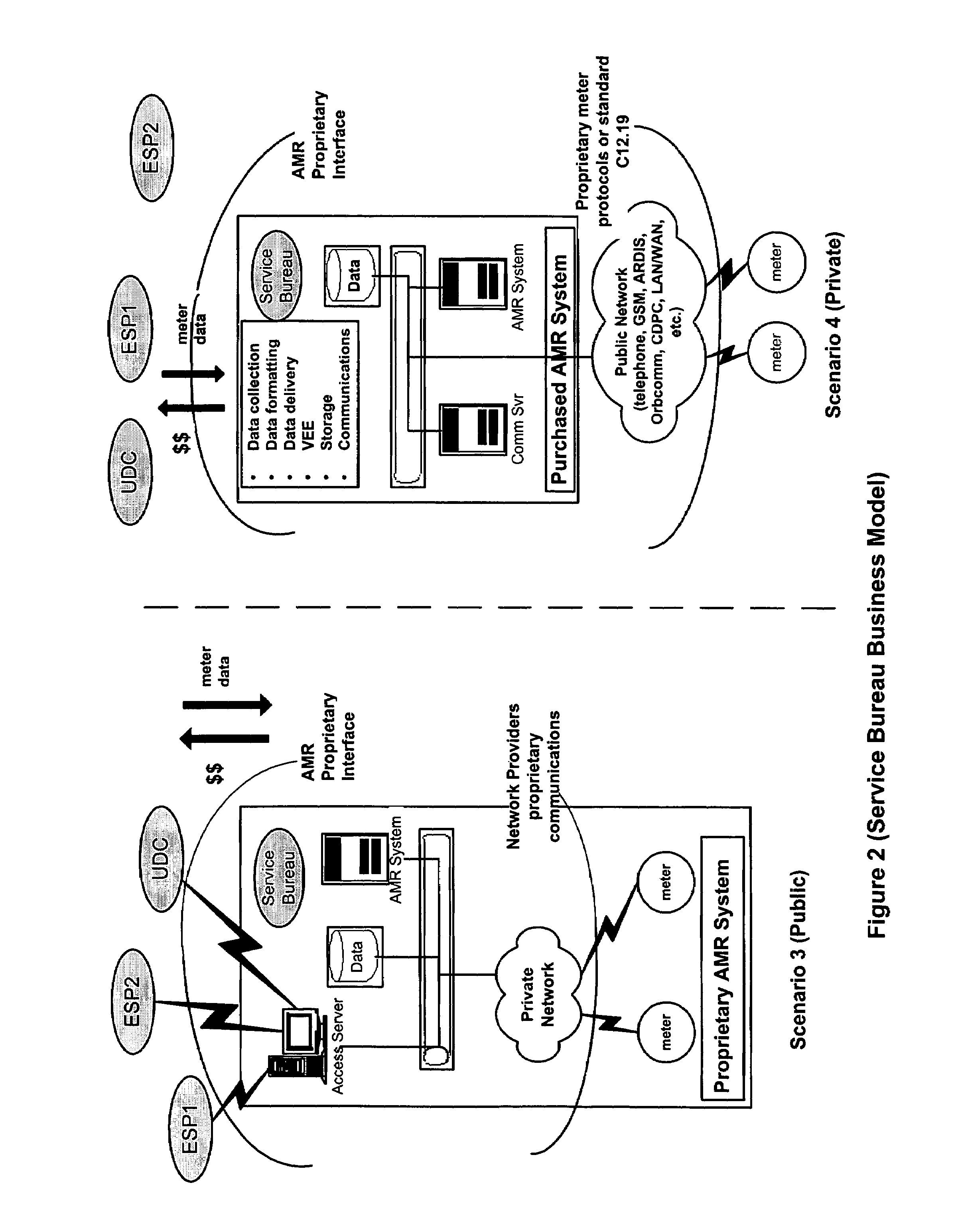Network-enabled, extensible metering system
a metering system and network technology, applied in the field of utility meter integration, to achieve the effect of removing dependen
- Summary
- Abstract
- Description
- Claims
- Application Information
AI Technical Summary
Benefits of technology
Problems solved by technology
Method used
Image
Examples
Embodiment Construction
[0048]The present invention introduces a new method for generating metering revenue using new, faster and improved communication and device technologies. In this system and business model, a new meter apparatus for collecting and storing metered data and information is part of a virtual machine as is the network application system of which it is a part. By residing on the network, the meter information becomes readily accessible to other devices, applications, and users on the network. Using new object-oriented, embedded networking technologies (e.g., Sun Microsystems' Java® / Jini®, Microsoft's Universal Plug and Play®, etc.), service discovery protocols, and security mechanisms, devices (i.e., meters) and services (i.e., data collection, storage, validation, TOU, etc.) are accessible to MDUs (such as, ESP, UDC, and MDMA) that need access to raw or metered information.
[0049]An exemplary embodiment of the present invention will now be described from the perspectives of the business mo...
PUM
 Login to View More
Login to View More Abstract
Description
Claims
Application Information
 Login to View More
Login to View More - R&D
- Intellectual Property
- Life Sciences
- Materials
- Tech Scout
- Unparalleled Data Quality
- Higher Quality Content
- 60% Fewer Hallucinations
Browse by: Latest US Patents, China's latest patents, Technical Efficacy Thesaurus, Application Domain, Technology Topic, Popular Technical Reports.
© 2025 PatSnap. All rights reserved.Legal|Privacy policy|Modern Slavery Act Transparency Statement|Sitemap|About US| Contact US: help@patsnap.com



